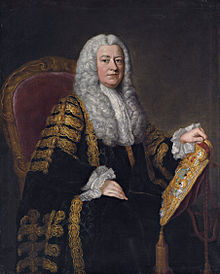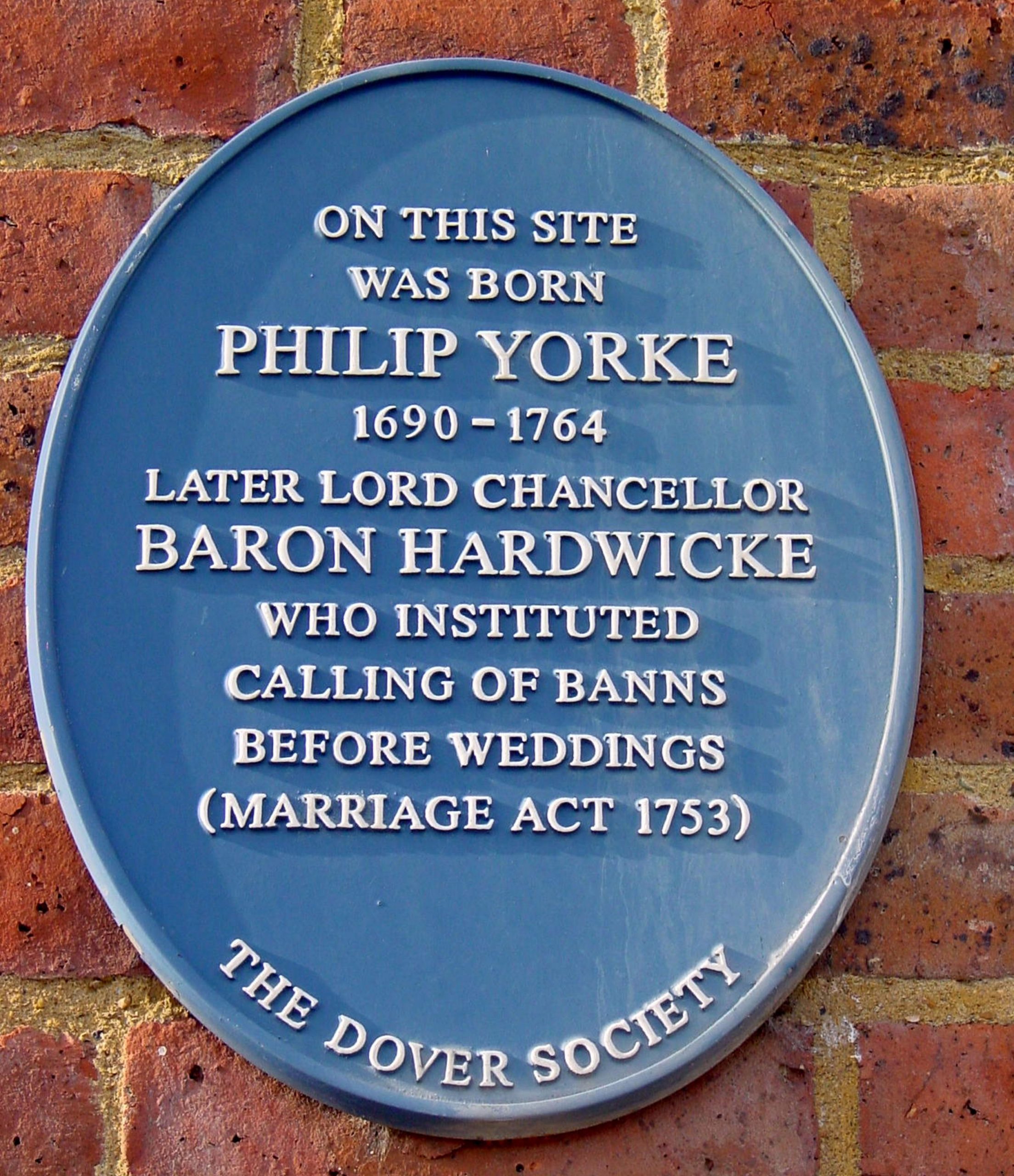This plaque was installed in December 2000 and is located near the centre of Snargate Street.
Philip Yorke, 1st Earl of Hardwicke, PC. Also known as Baron Hardwicke of Hardwicke and Viscount Royston.
A son of Philip Yorke, an attorney, he was born at Dover on 1st December 1690. Through his mother, Elizabeth, daughter and co-heiress of Richard Gibbon of Rolvenden, Kent, he was connected with the family of Edward Gibbon the historian. He was educated at a school in Bethnal Green run by Samuel Morland, a nonconformist.
Philip Yorke, was an English lawyer and politician who served as Lord High Chancellor of Great Britain. He was a close confidant of the Duke of Newcastle, Prime Minister between 1754 and 1756 and 1757 until 1762.
He was a member of His Majesty’s Most Honourable Privy Council, also known as the Privy Council (PC), officially, is a formal body of advisers to the sovereign of the United Kingdom. Its membership mainly comprises senior politicians who are current or former members of either the House of Commons or the House of Lords.
The Privy Council formally advises the sovereign on the exercise of the Royal Prerogative, and it issues executive instruments known as Orders in Council which, among other powers, enact Acts of Parliament. The Council also holds the delegated authority to issue Orders of Council, mostly used to regulate certain public institutions. The Council advises the sovereign on the issuing of Royal Charters, which are used to grant special status to incorporated bodies, and city or borough status to local authorities. The Privy Council’s powers have largely been replaced by its executive committee, the Cabinet of the United Kingdom.
At the age of 16, Yorke entered the attorney’s office of Charles Salkeld in Holborn, London. He was entered at the Middle Temple in November 1708. Called to the bar at the Middle Temple in 1715, he afterward joined Lincoln’s Inn, of which he was bencher and treasurer in 1724.
In 1719 he established his reputation as an equity lawyer in a case in which Robert Walpole’s family was interested, by an argument displaying profound learning and research concerning the jurisdiction of the chancellor, on lines which he afterwards more fully developed in a celebrated letter to Lord Kames on the distinction between law and equity.
On 16th May 1719 he married Margaret, daughter of Charles and Mary Cocks, sister of Lord Chancellor Somers and widow of William Lygon who had died 1716. They had five sons and two daughters.
Through the Earl of Macclesfield’s influence with the Duke of Newcastle Yorke entered parliament in 1719 as the member for Lewes. He sat in Parliament (1719, 1722–34). Although he had only been a barrister for four years, in 1720 he was appointed solicitor-general, with a knighthood. Hardwicke was appointed attorney general in 1724, lord chief justice in 1733, and then lord chancellor in 1737.
In 1739, he purchased Wimpole Hall, the greatest country house in Cambridgeshire.
For many years from 1740 onward Hardwicke held the controlling power in the government. During King George II’s absences on the European continent he was an influential member of the Council of Regency. He had to cope with the Jacobite rising of 1745 and after the Battle of Culloden, he presided at the trial of the Scottish Jacobite peers. He carried out the great reform of 1746, which swept away the private heritable jurisdictions of the Scottish landed gentry. Among his other services was the reform of the English marriage laws in 1753, which required, however, that weddings be performed in Anglican churches.
 Philip Yorke, 1st Earl of Hardwicke, PC died, aged 73, in London, on 6th March 1764. He is buried, with many of his descendants, at the St. Andrew Churchyard at Wimpole. His monument was sculpted by Peter Scheemakers.
Philip Yorke, 1st Earl of Hardwicke, PC died, aged 73, in London, on 6th March 1764. He is buried, with many of his descendants, at the St. Andrew Churchyard at Wimpole. His monument was sculpted by Peter Scheemakers.
The forty-five Jacobite rebellion
Britain’s involvement in the War of the Austrian Succession, Tory and popular anger at the political deals that followed Walpole’s resignation, and the infighting among the Whig elite were the background to the Jacobite rebellion of 1745–46. Since Britain was now at odds with France, the latter power was willing to sponsor an invasion on behalf of the Stuart dynasty. It hoped that such an invasion would win support from the masses and from the Tory sector of the landed class. Although a handful of Tory conspirators encouraged these hopes, the degree of their commitment is open to question. A large-scale French naval invasion of Britain in early 1744 failed in part because these men would not commit themselves to action. In July 1745 the Old Pretender’s eldest son, Charles Edward Stuart, the Young Pretender, landed in Scotland without substantial French aid. In September, with 2,500 Scottish supporters, he defeated a British force of the same size at the Battle of Prestonpans. In December, with an army of 5,000 men, he marched into England and got as far south as the town of Derby, some 150 miles from London.

